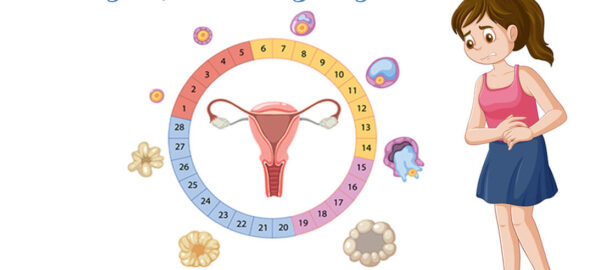
Image by Freepik
As a woman, have you ever considered the importance of your pelvic floor muscles? These muscles play a vital role in not just your sexual health but your overall reproductive health as well. Weak pelvic floor muscles could lead to conditions such as urinary incontinence, pelvic pain, and complications during childbirth. There are exercises and ayurvedic medicine for reproductive system that can help strengthen and tone your pelvic floor muscles. Explore the five practices that can help power up your pelvic floor and improve your overall reproductive health. So, let’s dive in and learn how to take care of this essential part of our bodies!
Introduction to Pelvic Floor Exercises
As women strive for optimal fertility, it is important to consider all aspects of their health – including pelvic muscle strength. The pelvic muscles are located at the bottom of the pelvis, supporting vital reproductive organs.
Pelvic floor exercises, commonly called Kegel exercises, have been proven beneficial in regulating female infertility. Pelvic floor muscle exercises target and strengthen the muscles that support the uterus, bladder, rectum, vagina, cervix, pubic bone, tailbone, hip bones, lower back muscles, thighs, and abdomen.
Regular exercise can help to regulate female infertility, particularly when paired with ayurvedic medicine for getting pregnant. By strengthening these muscles, women can improve their overall reproductive health, reduce the risk of complications during pregnancy, help prevent urinary incontinence, reduce lower back pain, and experience more enjoyable intercourse. Taking care of your pelvic muscles with targeted exercises like Kegels is a simple yet important step in promoting optimal fertility.
5 Pelvic Floor Exercises for Female Reproductive Health
Female reproductive health can be improved through pelvic floor exercises, commonly known as Kegel exercises. These workouts enhance the muscles supporting pelvic organs such as the uterus, bladder, and rectum. They can help improve bladder control, prevent or alleviate pelvic organ prolapse, and enhance sexual satisfaction. Here are five pelvic floor exercises for female reproductive health:
1. Basic Kegel Exercise:
- Sit or lie down comfortably.
- Contract your pelvic floor muscles as if halting urination or blocking gas release.
- Sustain the contraction for 5 seconds, followed by 5 seconds of relaxation.
- Repeat this 10-15 times, gradually increasing the hold time as your muscles become stronger.
2. Elevator Kegels:
- Start with a light contraction and imagine your pelvic floor muscles as an elevator with different floors.
- Gradually increase the contraction intensity floor by floor (like an elevator moving upward) until you reach the maximum contraction.
- Slowly release the contraction floor by floor (like an elevator moving downward).
- Perform 10-15 repetitions.
3. Bridge Exercise:
- Lie down on your back, ensuring your knees are bent and your feet are flat on the ground, separated by the width of your hips.
- While raising your hips off the floor, inhale and exhale to maintain a straight line from your shoulders to your knees.
- While holding this bridge position, engage your pelvic floor muscles.
- Lower your hips back down to the floor and relax the pelvic muscles.
- Repeat this exercise 10-15 times.
4. Squats:
- Stand with your feet shoulder-width apart.
- As you squat down, make sure to engage your pelvic floor muscles by tightening them.
- Return to a standing position, releasing the pelvic floor muscles.
- Do 10-15 squats in a controlled manner.
5. Pelvic Floor Ball Squeeze:
- Sit comfortably on a chair or exercise ball.
- Place a small exercise ball or cushion between your knees.
- Squeeze the ball or cushion with your knees while simultaneously contracting your pelvic floor muscles.
- Maintain the contraction for 5 seconds before releasing it.
- Repeat this exercise 10-15 times.
Remember to breathe regularly during these exercises and avoid overexertion. Consistency is key; aim to incorporate pelvic floor exercises and ayurvedic medicine for improving egg quality into your daily routine for the best results. If you need help with how to perform these exercises correctly, consider consulting a pelvic health specialist or physical trainer for guidance. They offer individualized suggestions tailored to your unique requirements and objectives.
Benefits of Strengthening Your Pelvic Floor
Strengthening your pelvic floor muscles with exercises and ayurvedic medicine for reproductive system offers a wide range of benefits, particularly for women. These muscles are crucial in supporting various pelvic organs, including the bladder, uterus, and rectum, and are essential for overall reproductive and sexual health.
Here are some of the key benefits of strengthening your pelvic floor:
- Improved Bladder Control: Strong pelvic floor muscles can help prevent and manage urinary incontinence, including stress incontinence (leakage during activities like sneezing or laughing) and urge incontinence (sudden and strong urges to urinate).
- Enhanced Bowel Function: A well-conditioned pelvic floor can aid in maintaining proper bowel control, reducing the risk of faecal incontinence.
- Prevention and Management of Pelvic Organ Prolapse: Strengthening your pelvic floor muscles through exercises can prevent or relieve pelvic organ prolapse. In this condition, weakened support structures cause organs like the uterus or bladder to descend into the vaginal canal.
- Postpartum Recovery: Strengthening the pelvic floor during pregnancy and after childbirth can promote faster recovery and prevent or minimize issues like urinary incontinence and prolapse.
- Enhanced Sexual Function: Strong pelvic floor muscles can lead to improved sexual sensation and satisfaction for both you and your partner. They play a role in achieving and maintaining vaginal tone and tightness.
- Support During Pregnancy: A strong pelvic floor can provide added support to the growing uterus during pregnancy, potentially reducing the risk of complications such as uterine prolapse.
- Reduced Risk of Lower Back Pain: Improved pelvic floor tone supports better posture and lowers the likelihood of lower back pain.
- Increased Core Strength: The pelvic floor is part of the core musculature, and strengthening it can improve overall core strength and stability.
- Prevention of Injury: Strong pelvic floor muscles can contribute to better overall physical stability, reducing the risk of injuries related to falls or heavy lifting.
- Enhanced Quality of Life: Improved pelvic floor function can lead to increased confidence, comfort, and overall quality of life, as it reduces the limitations and discomfort associated with pelvic floor issues.
It’s important to note that pelvic floor exercises, such as Kegels, should be performed correctly and consistently to achieve these benefits.
Conclusion
Integrating pelvic floor exercises into your fitness regimen can substantially influence your reproductive well-being. Strengthening and toning these muscles can reduce the risk of issues like urinary incontinence, pelvic pain, and childbirth complications. While the five exercises provide a solid starting point, consistent effort, dedication and ayurvedic medicine for reproductive system can improve pelvic floor strength and overall reproductive well-being. So, prioritize this essential aspect of your health and take the first steps toward empowering your pelvic floor today!










